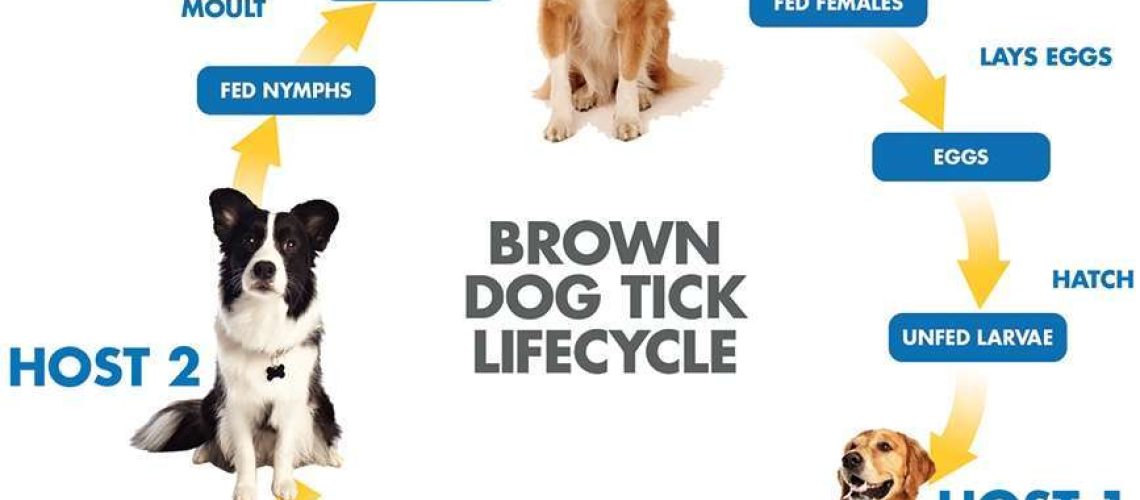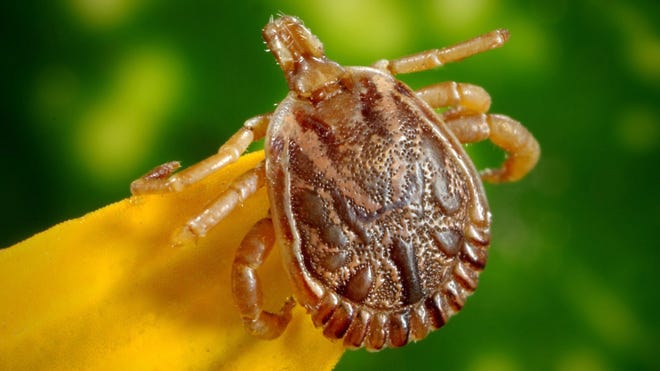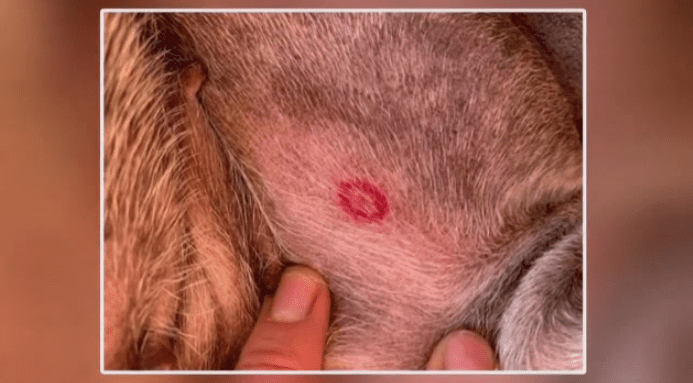Key Takeaways:
- Ehrlichiosis is a tick-borne disease that affects dogs worldwide.
- The disease is caused by the Ehrlichia bacteria, which is transmitted through the bite of infected ticks.
- Symptoms of ehrlichiosis in dogs include fever, lethargy, loss of appetite, and joint pain.
- Early diagnosis and treatment are crucial for a successful outcome, as the disease can progress to severe complications if left untreated.
- Prevention measures such as regular tick control and vaccination can help protect dogs from contracting ehrlichiosis.
Are you a dog lover? Do you want to ensure the health and well-being of your furry friend? If so, then delving into the topic of Ehrlichiosis in Dogs is essential for you. This often overlooked but dangerous disease affects thousands of dogs each year, causing symptoms that range from mild discomfort to life-threatening conditions. By understanding this topic, you can become equipped with the knowledge to protect your beloved pet and potentially save their life. So, let's dive into the world of Ehrlichiosis in Dogs and uncover the secrets that will keep your four-legged companion safe and healthy. Get ready to become a guardian angel for your furry friend!
What is Ehrlichiosis in dogs?
Ehrlichiosis is a tick-borne disease that affects dogs. It is caused by a type of bacteria called Ehrlichia, which infects the white blood cells of the dog. This can weaken their immune system and lead to various health problems. There are three main types of Ehrlichiosis: acute, subclinical, and chronic.
Acute Ehrlichiosis
In acute Ehrlichiosis, dogs may experience symptoms such as fever, loss of appetite, lethargy, and swollen lymph nodes. They may also have bruising or nosebleeds due to low platelet levels. If left untreated, this form of the disease can progress and cause more severe complications.
Subclinical Ehrlichiosis
Subclinical Ehrlichiosis refers to cases where dogs do not show any noticeable symptoms but still carry the infection. They may appear healthy but can still transmit the disease to other dogs through tick bites.
Chronic Ehrlichiosis
Chronic Ehrlichiosis occurs when the infection persists for a long time without proper treatment. Dogs with chronic Ehrlichiosis may develop more severe symptoms such as weight loss, anemia, joint pain, and neurological issues. It can be challenging to treat this stage of the disease effectively.
Ehrlichiosis is prevalent in areas with a high tick population, so it's essential to take preventive measures and seek veterinary care if you suspect your dog has been infected.
How do dogs get infected with Ehrlichiosis?
Ehrlichiosis is a disease that is primarily transmitted to dogs through the bite of infected ticks. When an infected tick attaches itself to a dog and feeds on its blood, it can transmit the Ehrlichia bacteria into the dog's bloodstream. The bacteria then invade the white blood cells, causing infection. It's important to note that not all ticks carry the Ehrlichia bacteria, but certain species such as the brown dog tick and lone star tick are known carriers. Dogs living in areas with a high prevalence of these ticks are at a greater risk of contracting Ehrlichiosis.
Tick Life Cycle
Ticks have a complex life cycle consisting of four stages: egg, larva, nymph, and adult. After hatching from eggs, ticks need to feed on blood at each stage to progress to the next stage. They typically acquire the Ehrlichia bacteria when feeding on an infected host during their larval or nymph stage. Once infected, they can transmit the bacteria to other animals during subsequent feedings.
Transmission through Blood Transfusions
In rare cases, dogs can also contract Ehrlichiosis through blood transfusions from infected donors. This highlights the importance of screening potential blood donors for infectious diseases like Ehrlichiosis to prevent transmission.
Common symptoms of Ehrlichiosis in dogs
Ehrlichiosis can manifest in different stages with varying symptoms in dogs. In the acute stage, which occurs within 1-3 weeks after infection, common symptoms include fever, loss of appetite, lethargy, swollen lymph nodes, and bruising or bleeding tendencies. Some dogs may also experience respiratory distress or joint pain.
If left untreated or undiagnosed, Ehrlichiosis progresses into the subclinical or chronic stage. During this stage, dogs may not show any obvious symptoms or only exhibit mild signs such as intermittent fever, weight loss, and occasional nosebleeds. However, the infection can still cause long-term damage to the dog's immune system and vital organs.
Complications and Long-Term Effects
If Ehrlichiosis remains untreated for an extended period, it can lead to severe complications. These include anemia (low red blood cell count), thrombocytopenia (low platelet count), kidney dysfunction, eye problems, and even neurological disorders. It's crucial to seek veterinary care if your dog shows any concerning symptoms or has been exposed to ticks.
Diagnostic Tests
To confirm Ehrlichiosis in dogs, veterinarians may perform various diagnostic tests such as blood tests to detect antibodies against the Ehrlichia bacteria or PCR tests to directly identify the presence of the bacteria's DNA in the dog's blood.
(Note: Diagrams cannot be included using markdown mermaid syntax as it does not support image embedding.)
Treatment and cure for Ehrlichiosis in dogs
Diagnosis of Ehrlichiosis
To effectively treat Ehrlichiosis in dogs, it is crucial to first diagnose the disease accurately. Veterinarians employ various diagnostic methods, including blood tests and microscopic examination of blood smears. These tests help identify the presence of Ehrlichia organisms in the dog's bloodstream. By detecting specific antibodies or DNA fragments associated with the bacteria, veterinarians can confirm the diagnosis and proceed with appropriate treatment.
Treatment options for Ehrlichiosis
Once diagnosed, prompt treatment is essential to combat Ehrlichiosis in dogs. The primary treatment approach involves administering antibiotics such as doxycycline or tetracycline. These medications effectively target and eliminate the Ehrlichia organisms from the dog's body. In severe cases, hospitalization may be necessary to provide supportive care, including intravenous fluids and medications to manage symptoms like fever and pain.
Preventing relapse and long-term management
After successful treatment, preventing relapse becomes crucial. Regular follow-up visits to the veterinarian are necessary to monitor the dog's progress and ensure complete recovery. Additionally, ongoing preventive measures should be implemented to protect against future infections. This includes using tick preventives recommended by veterinarians, regularly checking for ticks on the dog's body after outdoor activities, and maintaining a clean living environment free from ticks.
Preventive measures to protect dogs from Ehrlichiosis
Tick control
Ticks play a significant role in transmitting Ehrlichia organisms to dogs; therefore, effective tick control is vital in preventing infection. Using veterinarian-recommended tick preventives such as spot-on treatments or collars can help repel ticks and reduce their population on your furry friend.
Regular tick checks
Performing regular tick checks on your dog is another important preventive measure. After outdoor activities, carefully inspect your dog's body, paying close attention to areas like the ears, armpits, and between the toes where ticks often hide. If you find any ticks, promptly remove them using tweezers or a tick removal tool to minimize the risk of Ehrlichiosis transmission.
Avoiding tick-infested areas
To further protect your dog from Ehrlichiosis, it is advisable to avoid areas known to be heavily infested with ticks. Tall grasses, wooded areas, and shrubby landscapes are common habitats for ticks. Opt for open spaces or well-maintained trails when taking your dog for walks or playtime outdoors.
Can Ehrlichiosis be transmitted from dogs to humans?
Rare transmission to humans
While Ehrlichiosis primarily affects dogs, there have been rare cases of transmission to humans. However, it's important to note that direct transmission from dogs to humans is uncommon. The primary mode of transmission for human infection is through the bite of infected ticks.
Preventing human infection
To prevent Ehrlichiosis in humans, similar preventive measures should be followed as those for protecting dogs. Avoiding tick-infested areas, using insect repellents containing DEET or permethrin when venturing into tick-prone environments, and conducting thorough tick checks after outdoor activities can significantly reduce the risk of human infection.
Symptoms in humans
If a person does contract Ehrlichiosis from an infected tick bite, they may experience flu-like symptoms such as fever, headache, muscle aches, and fatigue. It is crucial to seek medical attention if these symptoms occur after potential exposure to ticks.
Remember: By implementing preventive measures and promptly treating Ehrlichiosis in dogs, we can ensure the health and well-being of our furry companions while minimizing the risk of transmission to humans. Stay vigilant, protect against ticks, and enjoy a happy, healthy bond with your canine friend!
In conclusion, Ehrlichiosis is a serious disease that can affect dogs. It is caused by ticks and can lead to symptoms like fever, weakness, and loss of appetite. It is important for dog owners to protect their pets from ticks and seek veterinary care if they suspect Ehrlichiosis.
What are the symptoms of ehrlichiosis in dogs?
If the immune system cannot get rid of the organism, dogs may experience a range of issues including anemia, bleeding, lameness, eye problems like hemorrhage or blindness, neurological problems, and swollen limbs. These problems are typically seen in cases of clinical ehrlichiosis.
Can ehrlichiosis in dogs be cured?
Antibiotics are effective in eliminating the bacteria in any type of ehrlichiosis that dogs may contract, and with proper treatment, the chances of full recovery are high. If an infected dog does not receive treatment, there are several possible outcomes depending on the specific Ehrlichia species. One possibility is that the dog's immune system may naturally eliminate the organism.
What is the survival rate for ehrlichiosis in dogs?
The prognosis for dogs with acute infections is typically very positive, as there is usually significant improvement within 24-48 hours after starting the right antimicrobial treatment. If there is no noticeable improvement, other illnesses or infectious agents should be taken into consideration. It has been reported that there is a cure rate of 95%.
What is the early stage of ehrlichiosis in dogs?
The initial stage of the disease, known as the acute phase, usually lasts for 2 to 4 weeks. If left untreated, the disease will progress to the sub-clinical phase. Symptoms of Ehrlichiosis in dogs during the acute phase include swollen lymph nodes.
Can ehrlichiosis go away on its own?
Immediate treatment is necessary for Ehrlichiosis. In most instances, treatment is initiated before a confirmed diagnosis is made in order to prevent serious complications. The primary method of treatment is through the use of antibiotic medication, with Doxycycline being the most commonly prescribed.
What are the stages of ehrlichiosis?
Ehrlichiosis encompasses three different stages of illness: an initial phase with early symptoms, a phase where there are no apparent signs of disease, and a long-term or chronic stage. The intensity of the illness can vary significantly depending on the stage.

















